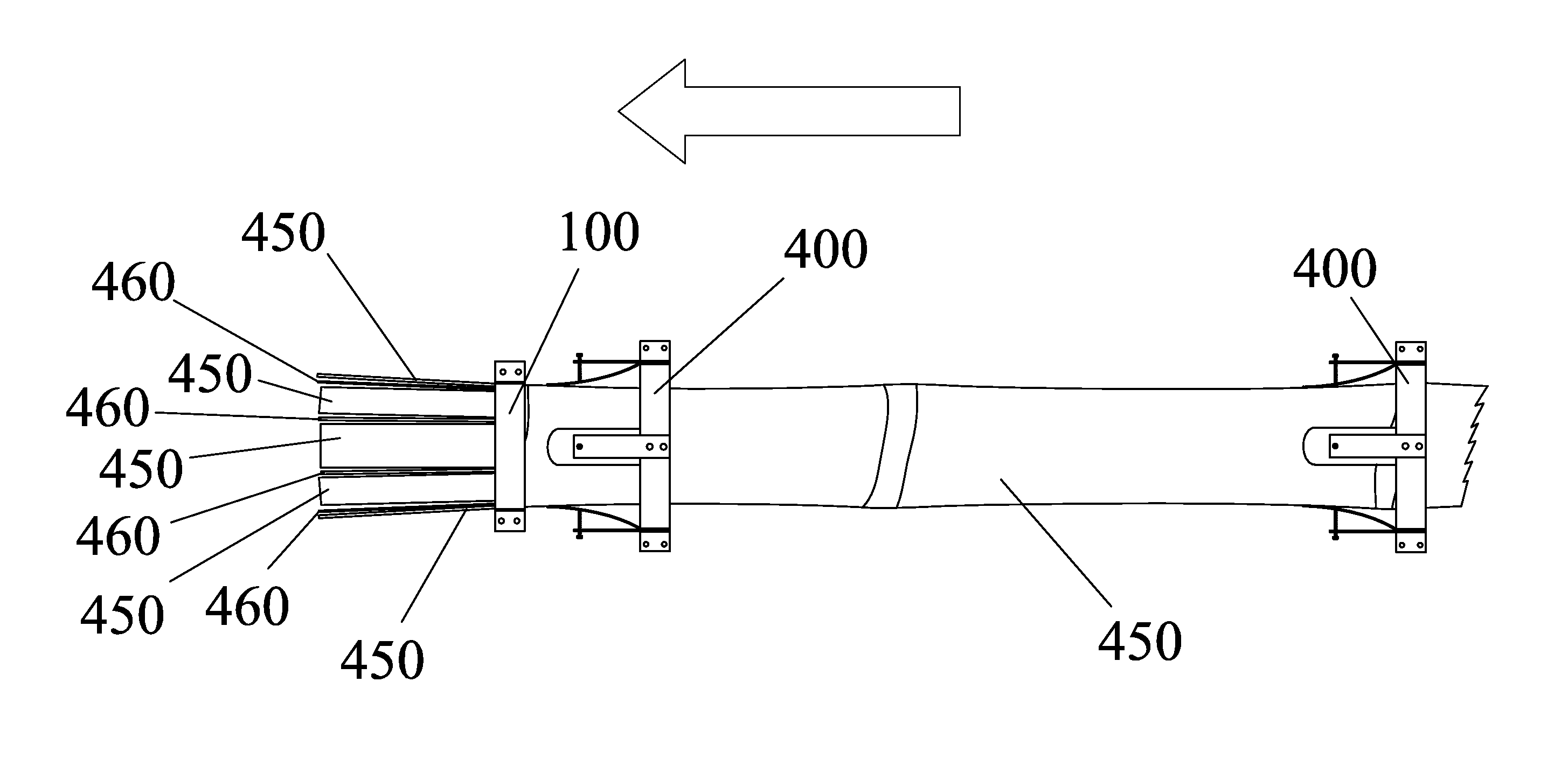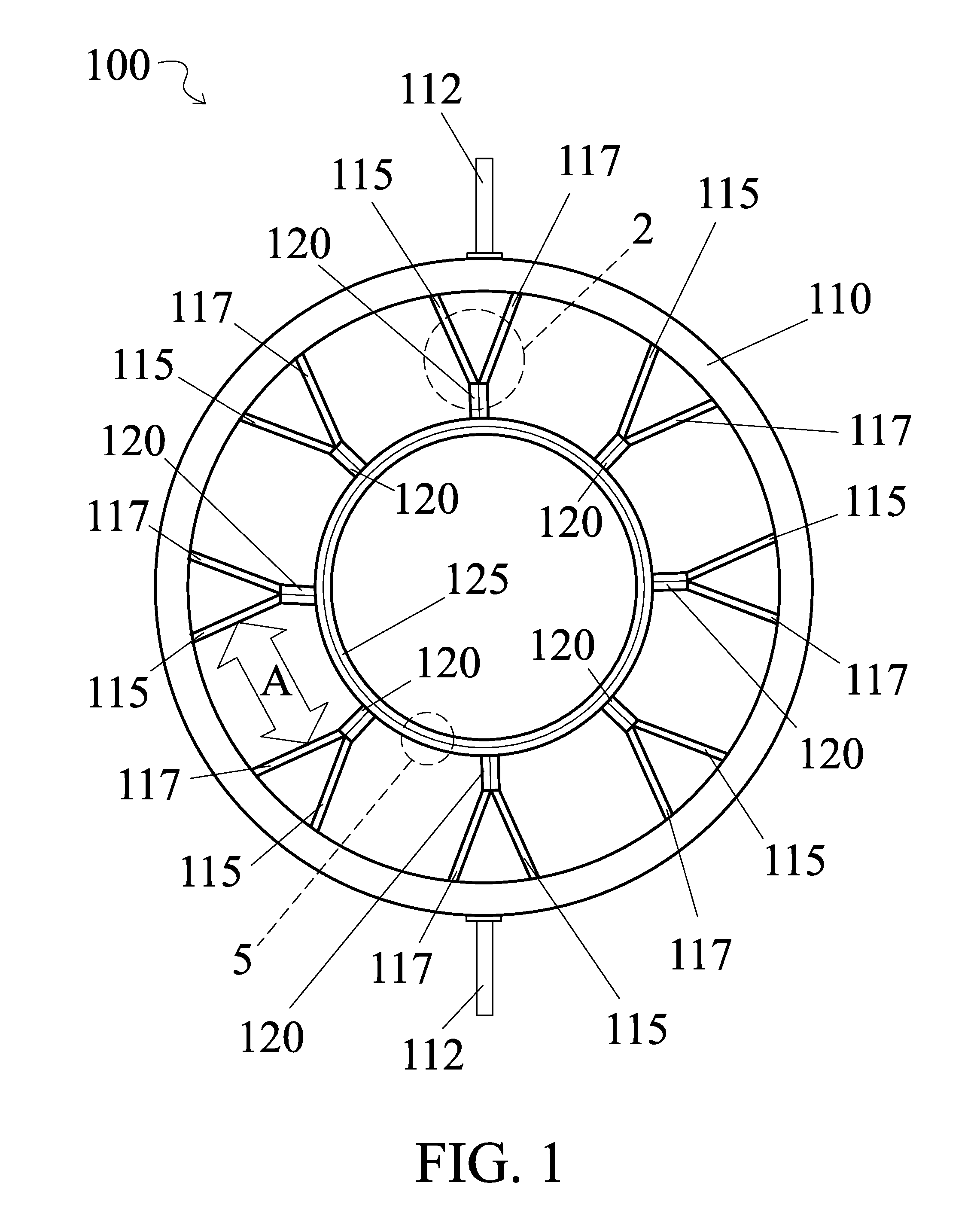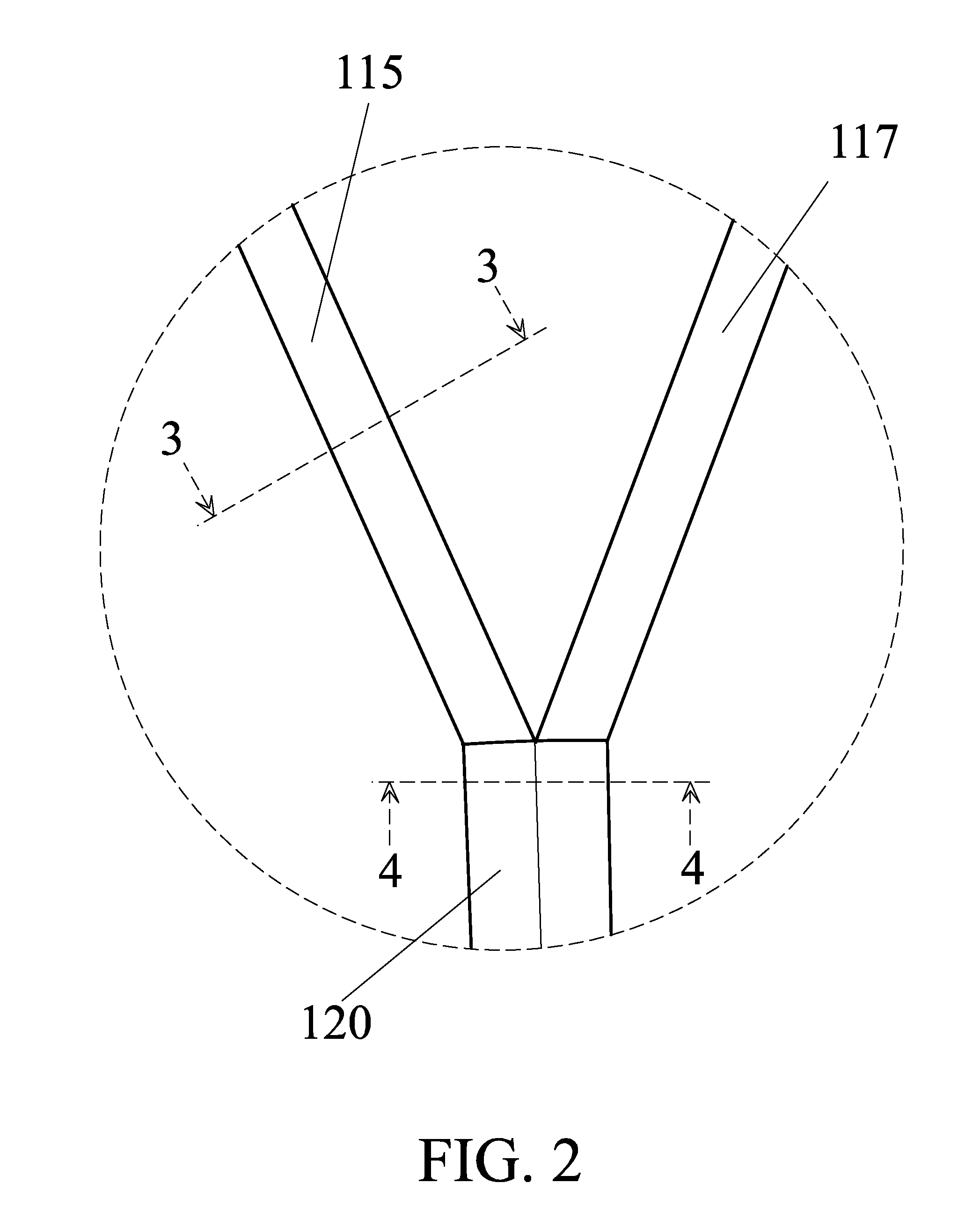Bamboo splitter
a splitter and bamboo technology, applied in the field of bamboo splitters, can solve the problems of long-used harvesting techniques and poor bamboo utilization in the lumber industry, and achieve the effect of more amenable to traditional building methods
- Summary
- Abstract
- Description
- Claims
- Application Information
AI Technical Summary
Benefits of technology
Problems solved by technology
Method used
Image
Examples
Embodiment Construction
[0018]In the following detailed description of the invention, reference is made to the drawings in which reference numerals refer to like elements, and which are intended to show by way of illustration specific embodiments in which the invention may be practiced. It is understood that other embodiments may be utilized and that structural changes may be made without departing from the scope and spirit of the invention.
[0019]Referring to FIGS. 1, 7, 9 and 12, a bamboo splitter 100 has an outer support ring 110. An inner ring blade 125 is centrally located and a plurality of base blades 120 project out from inner ring blade 125. In the embodiment shown, eight base blades 120 are shown and will produce eight bamboo slats 455. A pair of slat blades 115, 117 is located from base blade 120 to an inner diameter of outer support ring 110. The angle between oppositely disposed left slat blade 115 and right slat blade 117 is selected to produce a parallel cutting space (shown as area A) bounde...
PUM
 Login to View More
Login to View More Abstract
Description
Claims
Application Information
 Login to View More
Login to View More - R&D
- Intellectual Property
- Life Sciences
- Materials
- Tech Scout
- Unparalleled Data Quality
- Higher Quality Content
- 60% Fewer Hallucinations
Browse by: Latest US Patents, China's latest patents, Technical Efficacy Thesaurus, Application Domain, Technology Topic, Popular Technical Reports.
© 2025 PatSnap. All rights reserved.Legal|Privacy policy|Modern Slavery Act Transparency Statement|Sitemap|About US| Contact US: help@patsnap.com



